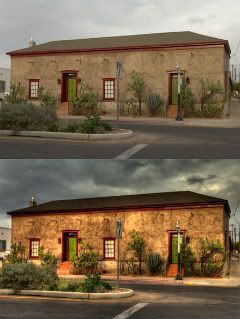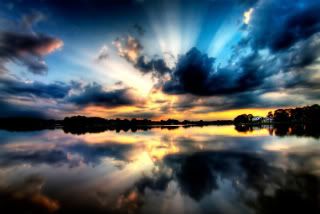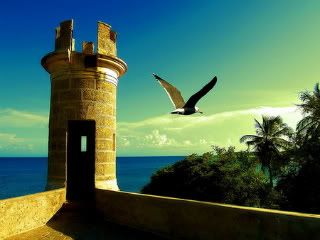To explain again briefly, the convential way to HDR is to use the auto-bracketing feature in your camera (available in most DSLRs, except mine of course) and take three or more exposures at increasingly higher exposure values; usually something like -1, 0, and +1. When you combine the exposures in an HDR program (like Photomatix Pro) it will make use of the best lighting from direct sunlight all the way to the shadows. Here's a great before-and-after example:

(photo via www.scottkelby.com)
Now, the key is to not overdo it...I think the HDR results that turn out like paintings are just taking it too far. It's incredible that we now have technology (which will only get better!) that allows us to render photographs extremely close to how our eyes saw them, so where exactly does the painting aspect fit into that? I'm sure it was just an unexpected result of the HDR process, and now people try to do it. Not to beat a dead horse, but come on.
As I said, my camera doesn't auto-bracket and besides, I don't have an HDR program. I could just take several exposures using a tripod (to make sure each picture lined up exactly with the others) and then use a free-trial version...but nah.
Anyway, here are two examples of HDR that I think were executed perfectly:


(photos via www.smashingmagazine.com)
These two photos and 33 others like it can be found via this link.

No comments:
Post a Comment